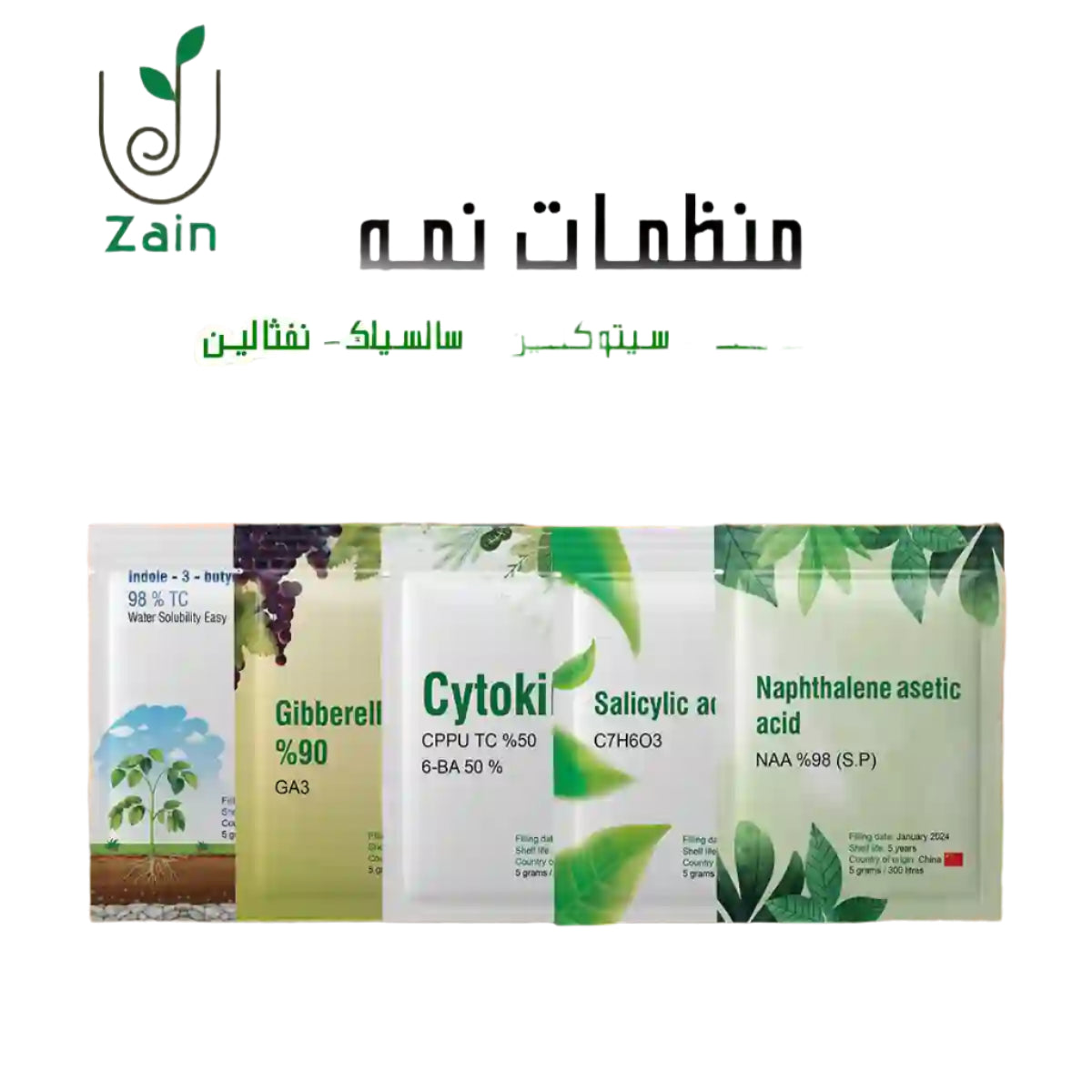Zain
Growth regulators group
Growth regulators group
Couldn't load pickup availability
Category
Fertilizers
Mixability
Mixable
Characteristics – Features
Gabriellek
Its effect on cell elongation events has been demonstrated, the most common of which is Gibberellin 3, and no growth regulators of any industrial hormones belonging to the gibberellin group have been known yet. Rather, gibberellin is still extracted from mushrooms as an easy and economical means.
• Breaking dormancy in seeds
• Gibberellin compensates for the light needs of other types of seeds.
• Treating barley grains with gibberellin to increase the rate of germination, make it regular, and shorten its duration.
• Reducing the cultivation period or compensating for it in plants that need it.
• Stimulating the growth of dormant buds. This is used to break the dormancy of newly ripe potato tuber buds.
• Stimulating cell division and elongation in whole plants, which increases vegetative growth, especially longitudinal growth, but for a short period, followed by slow growth. It is used to get a jump
Rapid growth of leafy vegetable crops, fodder, and ornamental plants raised in pots.
• Flowering of long-day plants treated with gibberellin under short-day conditions, i.e. gibberellin only compensates for the effect of the long day.
• Treatment with gibberellin accelerates reaching the flowering stage, shortening the plant’s growth period and then accelerating fruiting, which is beneficial for artichoke, banana, and other plants.
• Creating virgin nodes without forming seeds (seedless), as in peaches, apricots, pears, apples, and citrus fruits.
• It doubles the size of seedless, girlish grapes when treated with it after natural set. It also doubles the length of the berry holder when treated with it before the flowers open, which is beneficial.
Overcrowded items
• It delays the completion of growth and ripening of fruits and the occurrence of senescence, which allows for a long marketing period, as in apricots, plums and bananas.
It is used as a plant growth regulator with auxin as a stimulant. Absorbed by roots, stem or leaves. It is widely used in forests, vegetables, flowers, fruits, etc. It stimulates the formation of adventitious roots, enhances fruit set, and prevents premature fruit drop.
Salicylic acid (SA) is a crucial plant hormone involved in many processes, including seed germination, root growth, stomatal closure, flower induction, thermogenesis, and response to abiotic and biotic stresses. Its central role in plant immunity, although widely studied, remains to be seen
Indole butyric acid belongs to the group of auxins, which is one of the most important plant hormones
Which works to increase the activity of enzymes and has the ability to cause changes in the permeability of membranes. It also works to elongate cells through its effect on activating the synthesis of m-RNA as well as protein.
It also works to make the cutting process successful and helps the cuttings to produce roots and increase their density after completing the rooting stage.
Cytokinins
Cytokinins are hormones that stimulate cell division and the occurrence of Cytokinases, from which their name is derived. Therefore, they are considered the youth hormone in plants, as they delay aging and prevent falling of both leaves and fruits, and lead to the building of protein and chlorophyll. Therefore, they are used to prevent yellowing as one of the vital tests indicating it.
Its uses
• Treatment with cytokinin leads to the retention of chlorophyll in the area of the treated leaves. When storing some leafy crops, such as lettuce and parsley, they can be treated with cytokinin at concentrations of 1-10 parts per million to preserve their vegetables.
• Callus tissue forms on the cuttings in some species.
• Taking out the roots on the cuttings of some species.
• Reducing the effect of the phenomenon of apical dominance in most plants, and it is applied to encourage lateral buds in roses, thus increasing the number of flowers.
• Ending the resting phase in deciduous fruit trees if the winter cold is not enough to break bud dormancy. Peaches are treated with a concentration of 100-200 parts per million in winter of cytokinin to break bud dormancy.
• Increased fruit set in apples and figs.
• Producing seedless fruits in some types of fruits, such as mango, especially after mixing treatment with gibberellin and auxin.
Pre-Harvest Interval (PHI)
0
Producing company (Brand)
Zain
Share


